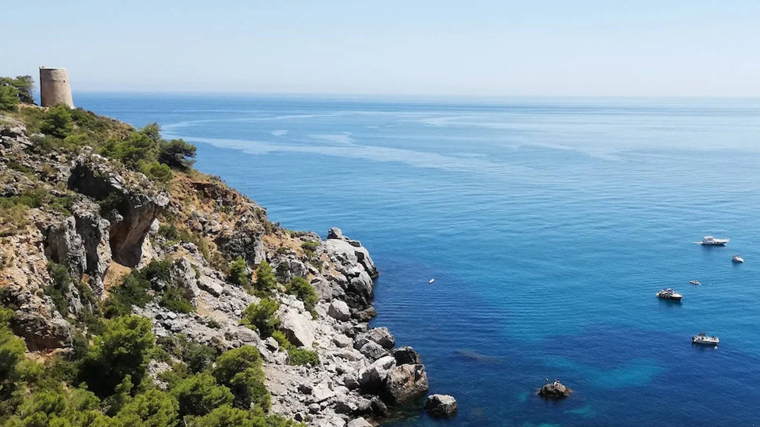This town in Granada looks like something out of a fairy tale and has the best views of the Mediterranean.

They say Granada 's beaches are more beautiful from above than from below; and this is true in some cases. From the top of the cliff, a newcomer can see a dreamy panorama, but once on the shore, they realize there are a significant number of pebbles, if not stones, which will make it difficult to set down an umbrella, spread out a towel, and walk comfortably (and without shoes) to the water.
The above is a bit of an exaggeration: the scenario described above doesn't apply to all of Granada's beaches, but only to a few exceptions. And it certainly can't be attributed to the main beach of La Herradura , a two-kilometer-long inlet with a shape that lends its name to a more than pleasant town.
Let's ignore secondary aspects for the case, such as the fact that La Herradura isn't a municipality, but rather depends on the neighboring city of Almuñécar , which is of course also very much worth a visit. However, it enjoys a wide margin of self-sufficiency and, as its more than four thousand inhabitants are well aware of, has a very rich and ancient history of its own.
Because while Phoenician remains have been found in Almuñécar, there is evidence in La Herradura that the Romans and Muslims passed through there, although after the Reconquista, its inhabitants disappeared and were gradually replaced by Christians. It was they who gave the town its name, which it still retains today.
Until the 19th century, it served a primarily defensive function, hence the preserved remains of a castle-fortress built to resist Berber attacks. In less warlike times, fishermen began to arrive there, especially Italians, who at that time made a living wherever they could. In the origins of Gibraltar and La Herradura, to give two different and relatively distant examples, the presence of the Genoese was crucial to establishing a settlement.
 La Herradura is next to the cliffs of Cerro Gordo and Maro
abc
La Herradura is next to the cliffs of Cerro Gordo and Maro
abc
Although its expansion is clearly linked to tourism , starting in the 1960s, as was the case on the nearby Costa del Sol, although to a lesser extent, hotels and residential developments began to be built to accommodate, either temporarily or permanently, visitors attracted by its calm Mediterranean waters, its gastronomic offerings, logically based on fish, and its fantastic landscapes.
Over time, the area has revealed many other points of interest. For example, diving , because the seabed there is among the richest on the Spanish coast. In La Herradura, Punta de la Mona, and the Marina del Este marina—quite beautiful, by the way—there are several diving schools and all the necessary equipment is available.
There's nature everywhere. To begin with, La Herradura is protected by the Almijara, Tejeda, and Alhama mountain ranges, which not only keep bad winds away from the coast, but also offer trails and essential routes for adventure sports enthusiasts, such as the Río Verde trail.
But just a stone's throw away are the cliffs of Cerro Gordo, which reach the neighbouring town of Nerja, in the province of Granada, with fantastic little coves such as El Cañuelo and Cantarriján , the latter with a nudist tradition and located in a particularly protected area, meaning that in summer you can only get there by shuttle bus.
In addition to all of the above, La Herradura offers consistent, milder temperatures than those inland, beautiful sunsets followed by a day at the beach, occasional strolls punctuated by a restorative dinner at a beach bar and a drink at a bar with a terrace. In summer, tourism tends to be predominantly Spanish, while in winter, visitors from Nordic countries abound. Everyone leaves satisfied because the experience is one they won't forget.
ABC.es





